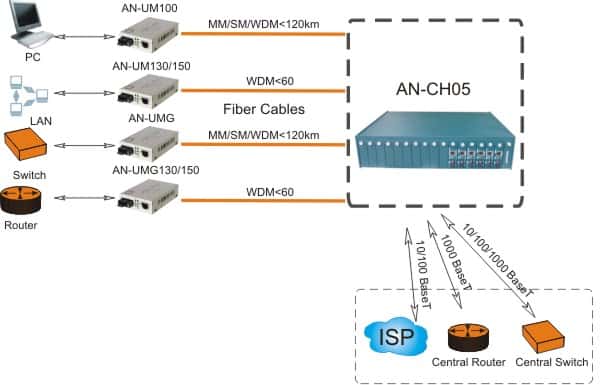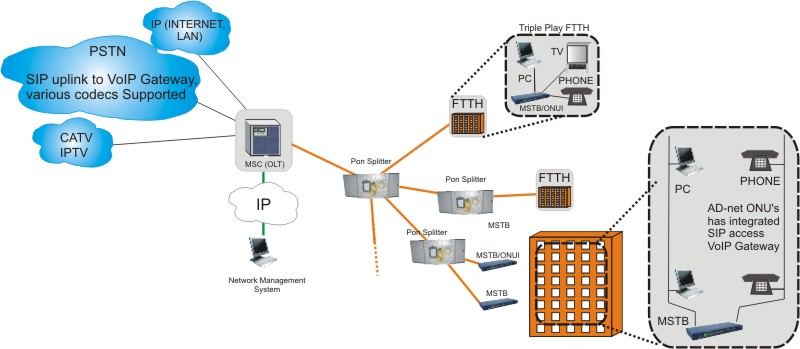For a network to be efficient, stable and speedy, it is very important to place right networking devices at the right spot and to use the right mode of communication. In the present networking industry, the demand on network to perform better is greater than ever, no matter how big or small a network is. With the usage and reach of the Internet expanding almost every moment and to everyone, the need for high performing data carriers is felt in every sphere in no small measure. Needless to mention the reliability of the network is not to be compromised.
And that is where fiber optics steps in. First what is fiber optics? Well, Fiber optics is the branch of optical technology that deals with the transmission of light or images across short or long distances, through transparent fibers. Now, why has it revolutionized the networking world? There are many points to prove that. To highlight the point of revolution, optical fiber forms the backbone of the global telecommunications system. This is how big it is.
It has many advantages over other kinds of communication system, which by and large is the crux of networking. First and foremost, it is the preferred and advisable form of communication because of its flexibility and its ability to be bundled as cables as optical fiber is as thin as a hair strand.
The most effective use of optical fiber is for long distance communications as light transmits through the fiber with almost no reduction as compared with electric cables. This is useful as the use of repeaters over long distance is less which saves cost. Each fiber (remember the hair strand mentioned earlier, yes that) can carry many independent channels and the light signals can be modulated at very high rates as high as 40Gb/sec. So, this is the power of one hair strand, think of the power when these are bundled together in a cable, phew!
Over short distance also say within an area of 500m or in an office building or a residential complex, fiber comes in handy as they save space and cost, reason being they can carry much much more data and at a high speed with the same space as required by electric cables of any type and also with lesser number of cables. Optical fibers are also resistant to electrical interference, so there is no indulgence between the signals. Wiretapping is also very difficult as compared to electric cables.
To see the impact and reality of this revolution, more and more countries are turning towards it for help in communications for what is called fiber to premises. For instance, in Japan, fiber optics system is replacing wire-based DSL as a broadband Internet source. KT in South Korea is providing a service called FTTH (Fiber to Home) which is 100% fiber optics connection to subscriber’s home. In the U.S., Verizon is providing a FiOS to its subscribers offering T.V., high speed Internet, and telephone communications on a 100% fiber optic network. All with one objective, efficient networking and communication for which fiber optical is the way to achieve that.
So, are you participating in the revolution? Analyze your network requirements and choose the most apt technology for your network.
What are the most common ways that you can go, by using our products?
Let us explain in brief. Basically, as the the more older approach, but still used by many of companies ISP in world is media converters, and that approach is called Fiber to The Curb.
The example of such scenario is given here in scheme below:

You can see, in this case we are placing the media converters chassis, like AN-CH05 in a center of some service area, and then put remotely the media converters, which are further connected to a last mile UTP cable to LAN, customer router or WAN. Main drawbacks of such a schemes are that, if you are building really a large scale network, then you will need a lot chassis, and each of those chassis will need a power supply, and this is what you will need install at unattended places, like multidwelling building basements and so on. Not a very easy management.
This is where the new concept of FTTH – based on PON – Passive Optical Network comes on.
The network, based on GEPON access scheme looks already like this:

That is where beaty of fiber access really shines!
Choose the GEPON approach because:
– It is absolutelly passive in the network in middle – splitters are not needed to be powered, the only active equipment are OLT and ONU!
– You end up with significantly lower network maintanance costs
– You can deliver to each customer 1 Gbps and more
– Troubleshooting is easy and simple – 1 ONU downtime causes the problems just to 1 customer, in above Fiber to the Curbe example, 1 chassis downturn can cause the stop of 1 big district of your network.
RELATED LINKS:
GEPON fiber optical access technology product line
Video | Data | Ethernet | Voice & Beyond over the fiber
Edge core & access products based on SDH


